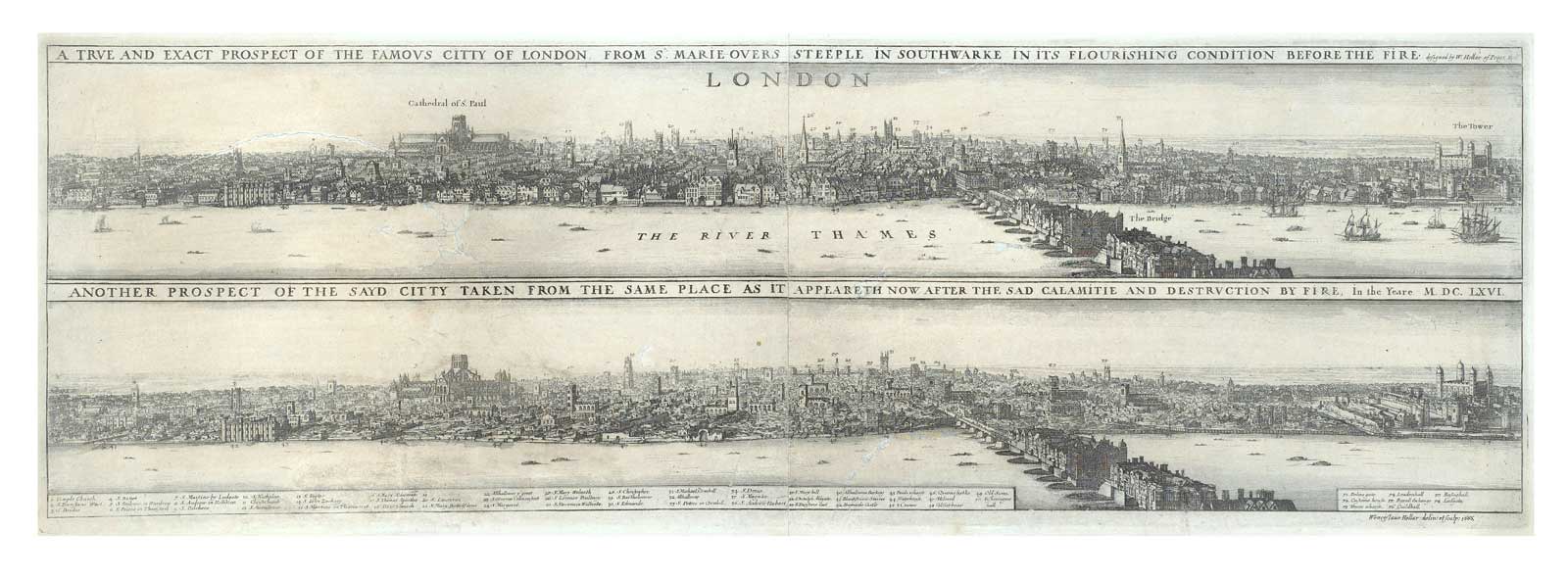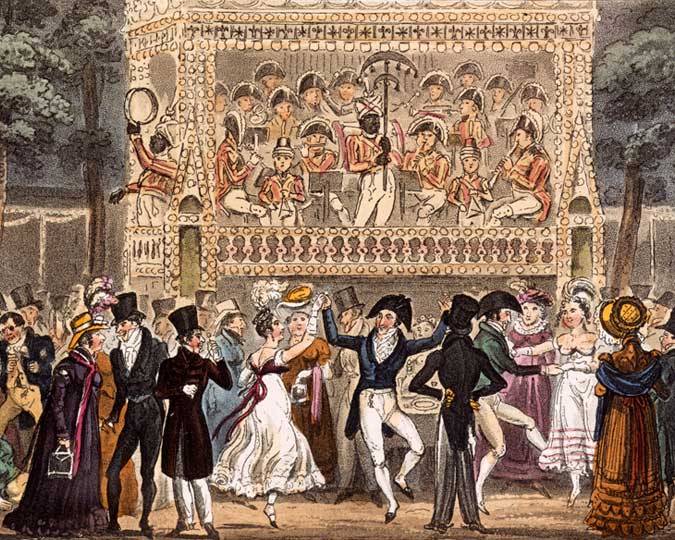As London faces a modern housing crisis, can we learn anything from the city's past? Curator Meriel Jeater explains how Londoners rebuilt (or didn't) after the Great Fire of 1666.
Londoners today are feeling the pinch from the capital’s housing crisis due to the ever-increasing prices of homes and the lack of affordable housing. People are having to move further away from central London, or the areas where they grew up, and many are abandoning the city altogether. The results of this crisis may have been familiar to the Londoners of 1666, though the cause was very different. Then it was one of the most terrible disasters in the city’s history: the Great Fire of London.
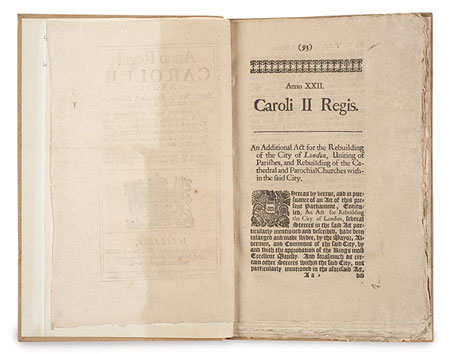
An additional act for the rebuilding of the City of London, 1670
An Act of Parliament for rebuilding the City of London churches burnt down in 1666.
A quarter of London was destroyed in the fire, which began on 2 September 1666. Within five days around 13,200 houses were in ruins and an estimated 100,000 Londoners were homeless. Reeling from their losses, people had to decide what to do next. Thousands camped in the fields outside the city in tents and shacks.
The City of London authorities rented out plots of land on fields and other open areas that they owned so that people could build temporary homes. Shanty towns grew up in places like Moorfields, where you could rent a plot for between £7 and £36. This was only a short-term solution; the Additional Rebuilding Act of 1670 stated that ‘Sheds, Shops and other Buildings’ that had been erected in ‘Smithfield, Moor-fields; and other void Places’ had to be removed by 29 September 1674 otherwise they would divert trade from the City. In other words, up to eight years after the fire, some Londoners were still living in these shanty towns, their old homes not yet rebuilt.
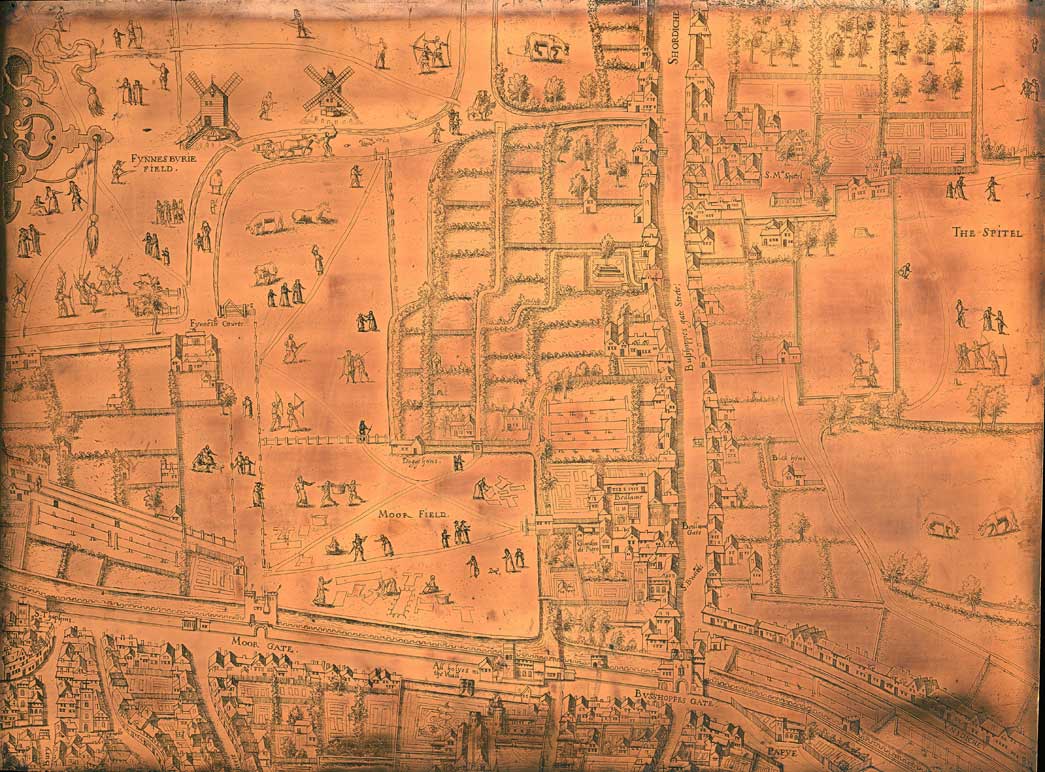
The Moorfields section of the Copperplate Map: 1559
Section from the first known map of London showing the area around Moorfields.

Issued by pubs and coffee houses as an alternative to low denomination coins, these be used to trace the movement of businesses after the Great Fire.
An option for those who could afford it was to move to one of the unburnt areas of London. Many landlords who had not lost their properties in the fire raised their rents immediately. On 7 September 1666, naval administrator and now famous diarist Samuel Pepys noted ‘Strange to hear what is bid for houses all up and down here; a friend of Sir W. Rider’s: having £150 for what he used to let for £40 per annum.’ Thomas Bromfield wrote a letter to his wife Kate on 17 September, saying that ‘Houses are ten times dearer than ever they were.’
One source of evidence for people’s post-fire moves within London lies in the Museum of London collection: trade tokens. These unofficial coins were issued by shops, taverns and coffee houses as small change and were stamped with the business owner’s name and location. There are several trade tokens that were issued from a different location after the Great Fire. Ralph Butcher is one example. From his trade token we know he owned a business in Tower Street in 1664. His 1666 token is issued from ‘Without Bishopsgate’, an area that was not burnt, and it’s likely that he moved here after his previous home was destroyed in the fire.
Clergyman Samuel Rolle wrote extensively on the fate of Londoners after the fire in his 1667 book Shlohavot, or, The burning of London in the year 1666. He commented on the impact of the migration of rich citizens from the burnt-out City to poorer suburban areas:
How much more considerable are the suburbs now, than that lately were? Some places of despicable termination, and as mean account, but a few months since, such as Houndsditch, and Shoreditch, do now contain not a few citizens of very good fashion…Time was that rich citizens would almost have held their noses, if they had past by those places where now it may be they are constrained to dwell…

A poor Londoner begs for money, 1684
Detail from the painting A Frost Fair on the Thames at Temple Stairs
If you found a property in the surviving three-quarters of London, you may not have been able to live in the comfort you were used to. According to Rolle’s 1668 book, London’s Resurrection, many people were ‘incommodiously’ situated and complained of being ‘pent up’ in small, ‘unsweet and unpleasant’ dwellings where it was difficult to practice their trades and accommodate their families. That might sound familiar to some Londoners today, where the housing squeeze has seen attics, basements and even cupboards offered on the letting market, sometimes breaching laws with their cramped or unsafe conditions.
Another course of action was to move away from London entirely. A Declaration from King Charles II on 5 September 1666 encouraged towns to take in homeless Londoners and let them trade and many may not have gone back to London. Samuel Rolle wrote in 1667 that Londoners were ‘dispersed and scattered into corners, some crowded into the Suburbs, others gone into the country, disabled in all likelihood, from ever returning again, to settle as before.’ The same is happening today as high house prices drive an exodus of London residents into distant suburbs and satellite cities from Brighton to Reading.
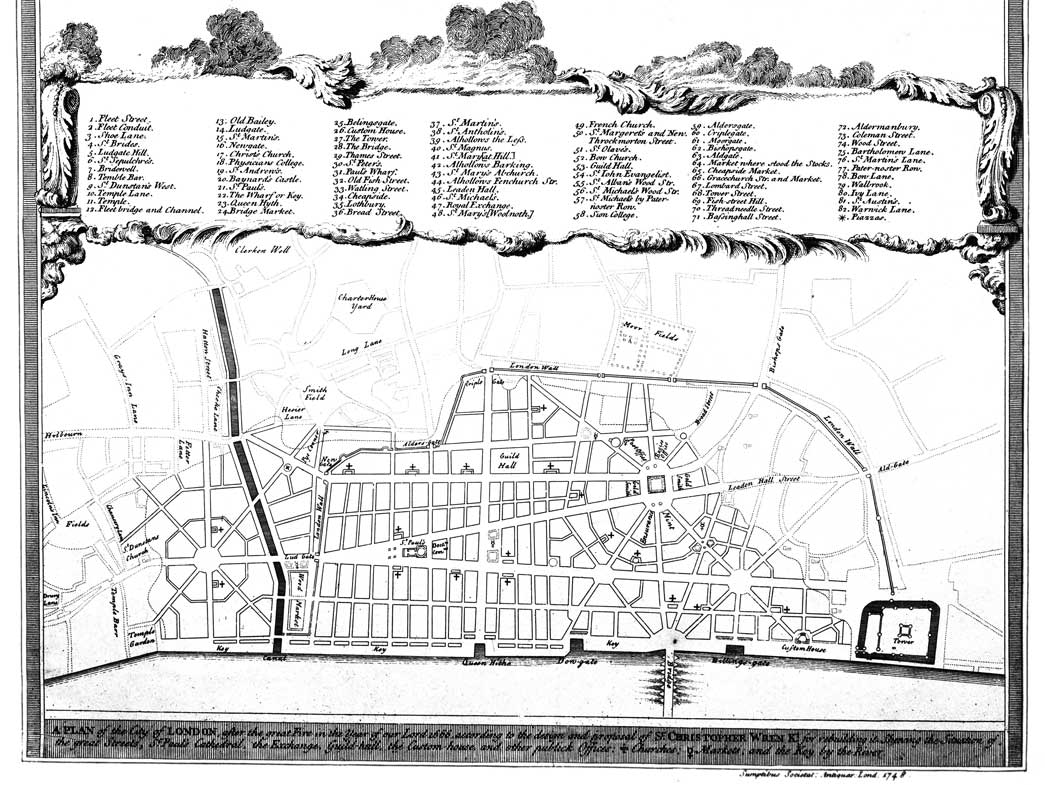
Design for rebuilding London after the Fire of London by Christopher Wren
Wren's plan to rebuild, never adopted, included long, wide streets, a canal for the Fleet river, piazzas and squares. Printed 1748.
Many saw the gigantic task of rebuilding the City as an opportunity. Christopher Wren and John Evelyn, among others, submitted designs to sweep away the cramped, winding streets of old London, replacing the muddle of the medieval city with orderly, open avenues and plazas. These schemes were controversial: one would-be city planner, Captain Valentine Knight, was arrested for publishing his his redesign for London. Knight had suggested that King Charles II could raise money from people paying him fees when renting the new houses. Charles was offended by the suggestion that he might "draw a benefit to himself, from so public a Calamity of his people".
Much of the land in the City of London was in private ownership with complicated mix of landlords, tenants and sub-tenants. Cutting across this complex tangle of rights with an ambitious new street plan was not a priority in 1666, when so many Londoners needed to rebuild their homes as quickly as possible. The winding streets of the medieval city were restored in the rebuilt London.
This dense network of streets have guided the future growth of the city, even into the 21st century. It's difficult to build American-style skyscrapers amid the narrow lanes and small blocks of the City of London. St. Paul's Cathedral, rebuilt to the designs of Christopher Wren, still influences London's planning regulations: new buildings must not block certain "protected views" of the cathedral from locations as distant as Richmond or Parliament Hill.
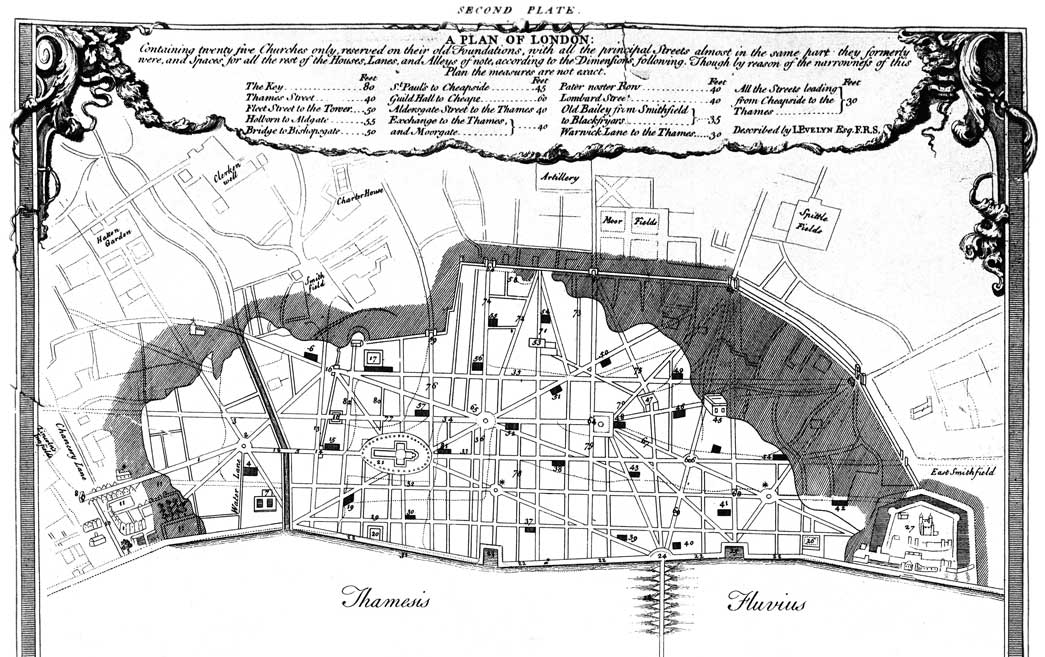
Design for rebuilding London after the Fire of London by John Evelyn
Evelyn's unrealised designs planned to replace London's narrow streeets with a grid-like system.
Though the Great Fire happened over 350 years ago, there are many aspects of its aftermath that strike a chord with us today. In post-fire London pressure on housing eased as the rebuilding progressed. It remains to be seen what will happen with our current housing crisis.








